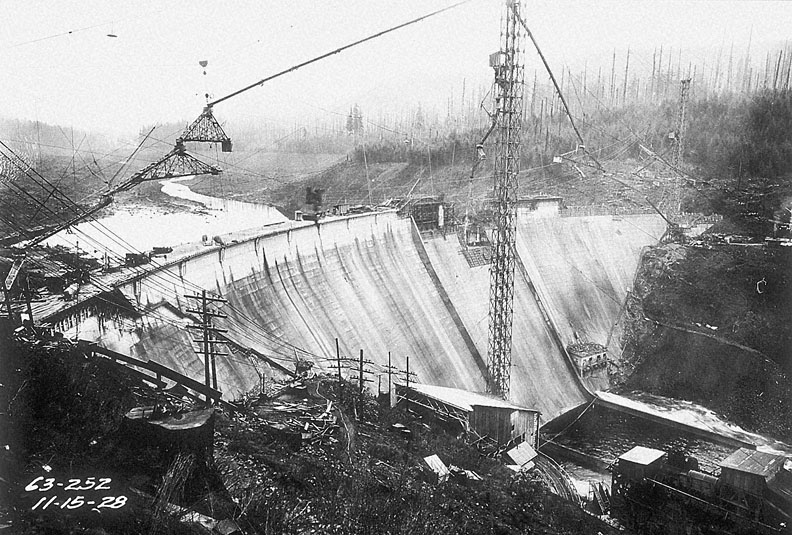- Catalog No. —
- OrHi 93664
- Date —
- November 1928
- Era —
- 1921-1949 (Great Depression and World War II)
- Themes —
- Geography and Places, Science, Medicine, and Technology
- Credits —
- Oregon Historical Society
- Regions —
- Willamette Basin
- Author —
- Unknown
Bull Run Dam Construction
The third Bull Run Dam (referred to as Dam 1), on the Bull Run River, east of Portland, shown here in November of 1928, was completed the year after this picture was taken. The city’s founders originally focused on using the water of the Willamette River for resident’s water needs, however, by 1895, when the Bull Run River was assessed, city leaders chose the Bull Run site over the Willamette.
The original Bull Run water system included the River and Bull Run Lake along with reservoirs at Washington Park and Mt. Tabor Park. Stephen Coffin, organizer of the Pioneer Water Works (est. 1857), developed a system that consisted of pipes constructed of fir logs with hand-bored, two-inch holes in the center of each log. And while the expanded capacity of the Coffin system was expected to meet the needs of a city of approximately two million inhabitants, residential waste of drinking water and irrigation stretched the water resources available after the building of the Bull Run River dam. When the city planners realized the dangers of wasting such amounts of water, they required usage be metered. By the early 1920s, the city began tracking water usage, a process which made residents less likely to use drinking water carelessly. Even with meters in place, however, the water saved was not enough to furnish the growing city without the building of three new dams in the twentieth century.
Written by Trudy Flores, Sarah Griffith, © Oregon Historical Society, 2002.

